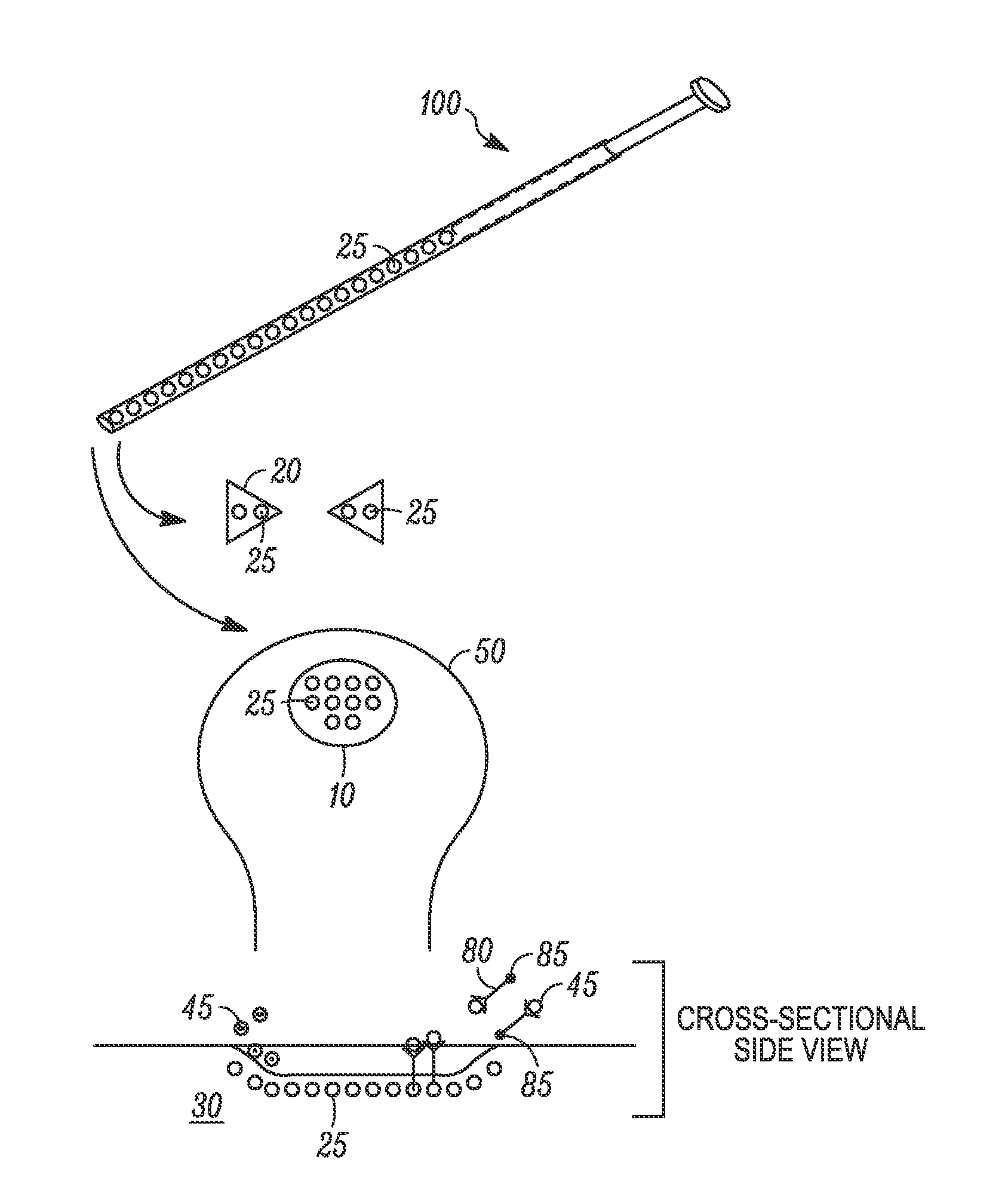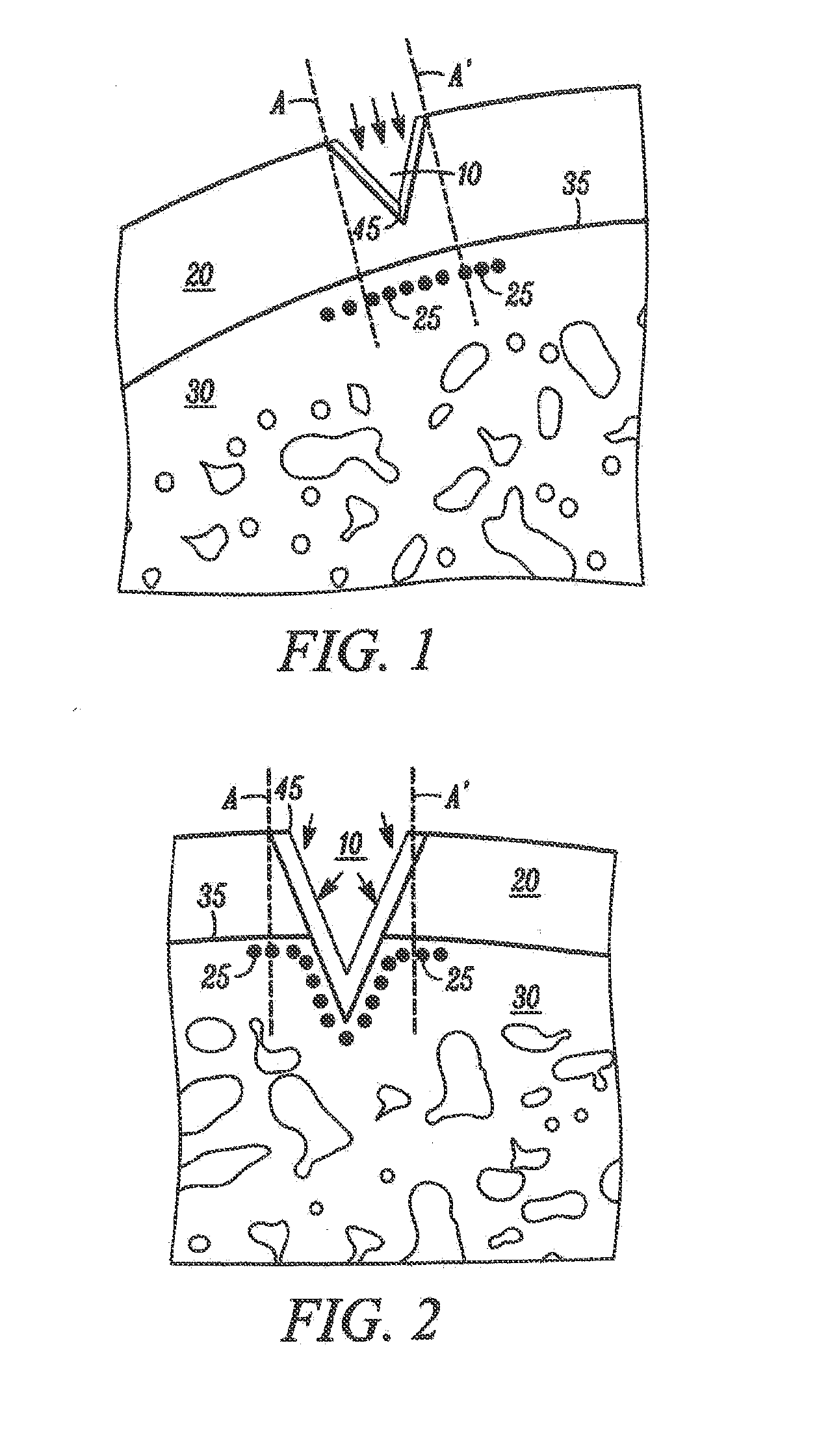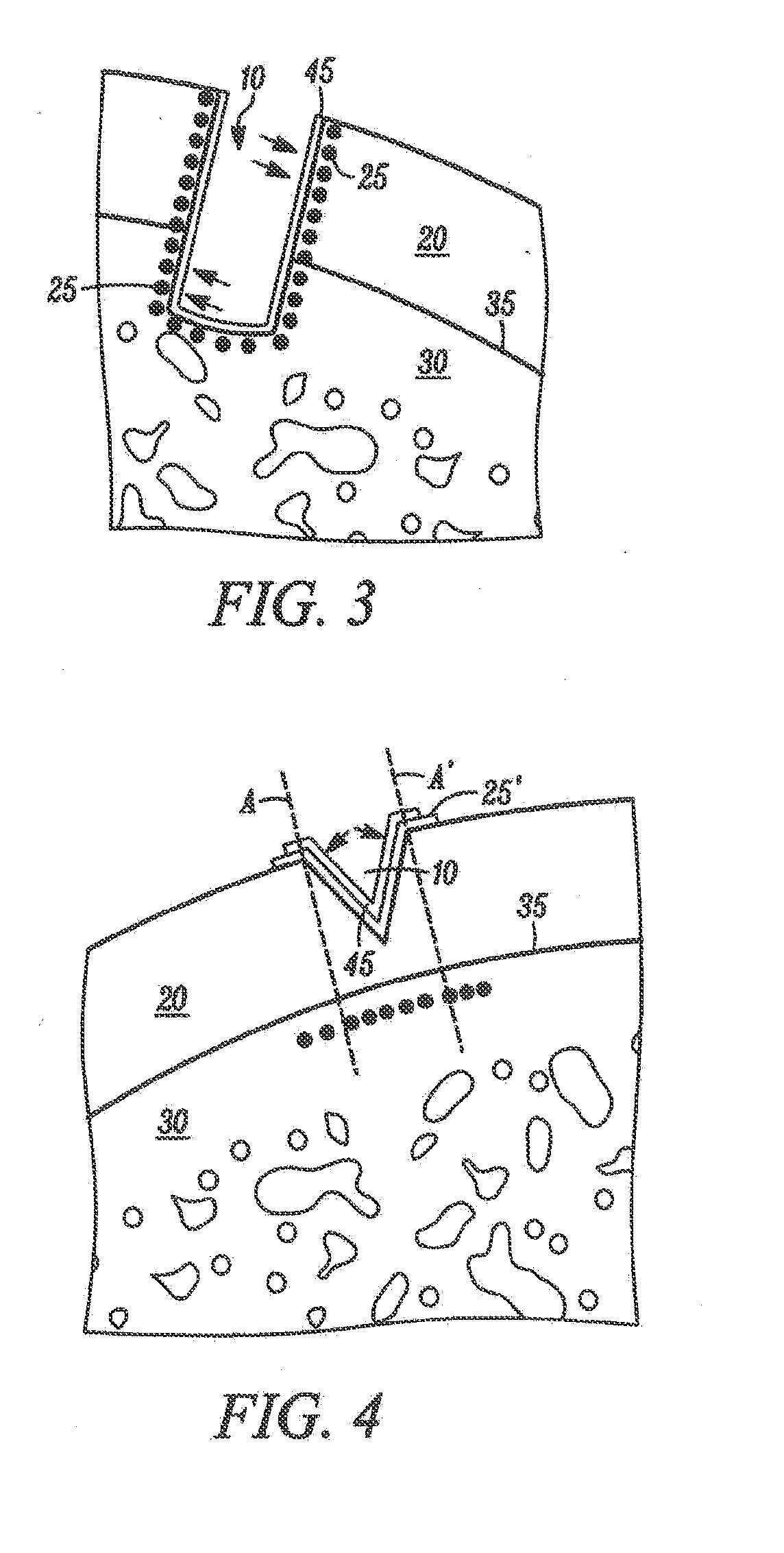Magnetic Retention of Regenerative Cells for Wound Repair
a regenerative cell and magnetic retention technology, applied in the field of magnetic retention of regenerative cells for wound repair, can solve the problems of abnormal cell growth, disrupting initial, uneven cell growth in a monolayer about the target region, interfering with proper engraftment, etc., and achieves a wider and more uniform cell coverage of the target region.
- Summary
- Abstract
- Description
- Claims
- Application Information
AI Technical Summary
Benefits of technology
Problems solved by technology
Method used
Image
Examples
examples
[0063]According to specific examples, the target region is a wound in articular cartilage of a joint of the patient, such as a knee, hip, or shoulder joint. The articular cartilage may be thinned or denuded in the target region, or have some other defect. Therefore, in particular embodiments in which articular cartilage repair is the objective, all or at least a portion of the magnetic particles, sheet, and / or magnetically inducible particles may be implanted in subchondral bone of a joint surface that is normally covered by articular cartilage in the case of a healthy joint. Particular examples include knee joint surfaces, such as the surface of a femoral condyle (e.g., the lateral or medial femoral condyle). Other knee joint surfaces include those of the lateral or medial tibial plateau, such as the head of the tibia or fibula. Representative hip joint surfaces include those of the femoral head or the acetabulum. Those skilled in the art will appreciate, in view of this disclosure...
PUM
| Property | Measurement | Unit |
|---|---|---|
| diameter | aaaaa | aaaaa |
| magnetization | aaaaa | aaaaa |
| magnetization | aaaaa | aaaaa |
Abstract
Description
Claims
Application Information
 Login to View More
Login to View More - R&D
- Intellectual Property
- Life Sciences
- Materials
- Tech Scout
- Unparalleled Data Quality
- Higher Quality Content
- 60% Fewer Hallucinations
Browse by: Latest US Patents, China's latest patents, Technical Efficacy Thesaurus, Application Domain, Technology Topic, Popular Technical Reports.
© 2025 PatSnap. All rights reserved.Legal|Privacy policy|Modern Slavery Act Transparency Statement|Sitemap|About US| Contact US: help@patsnap.com



